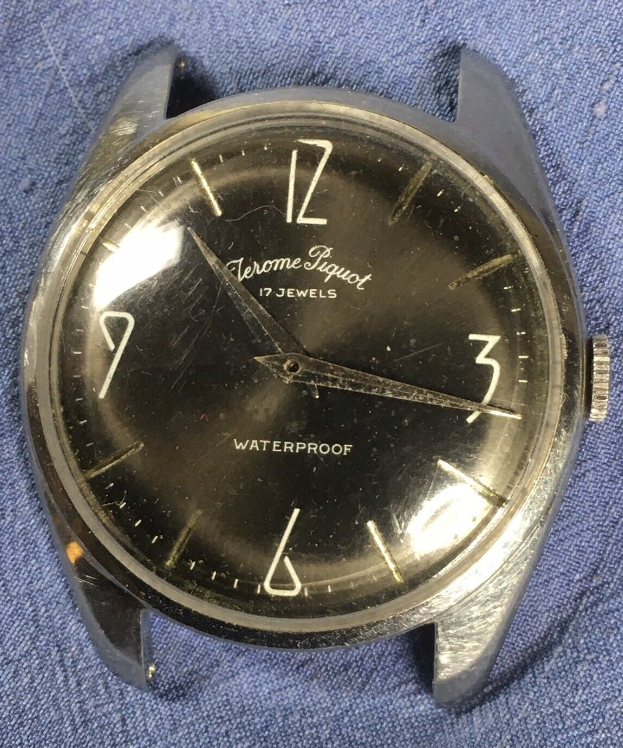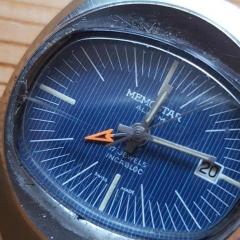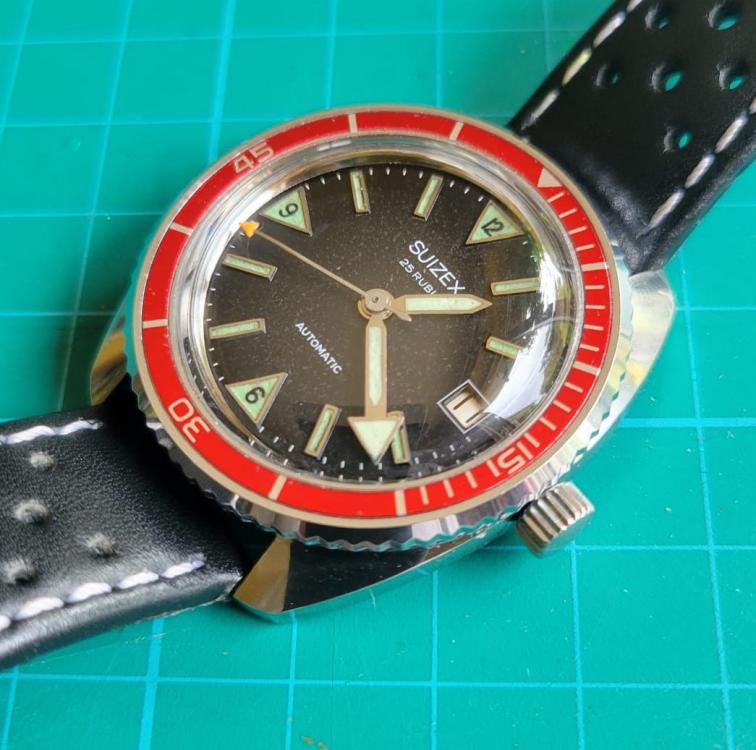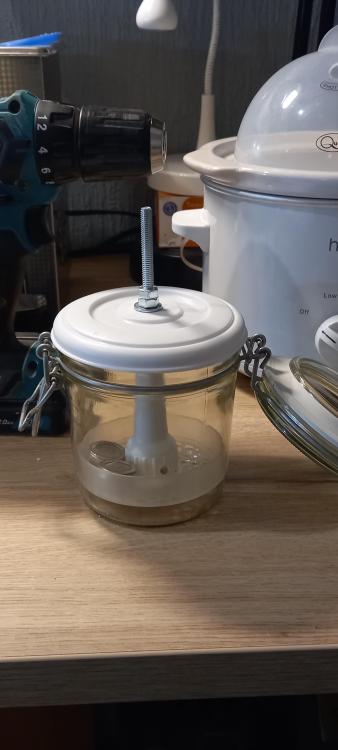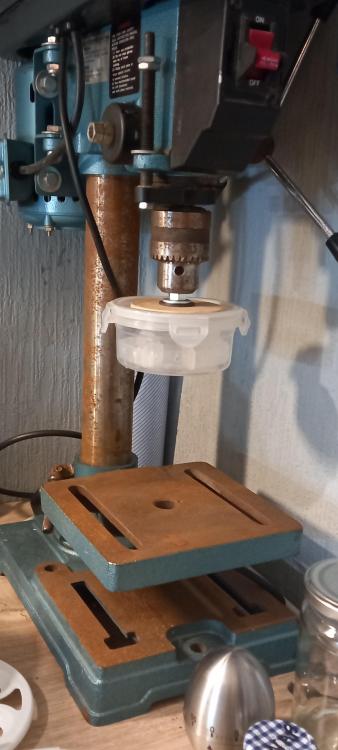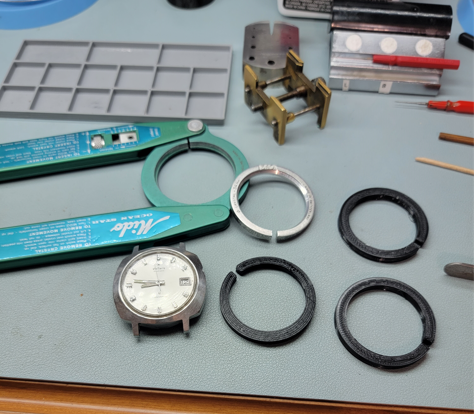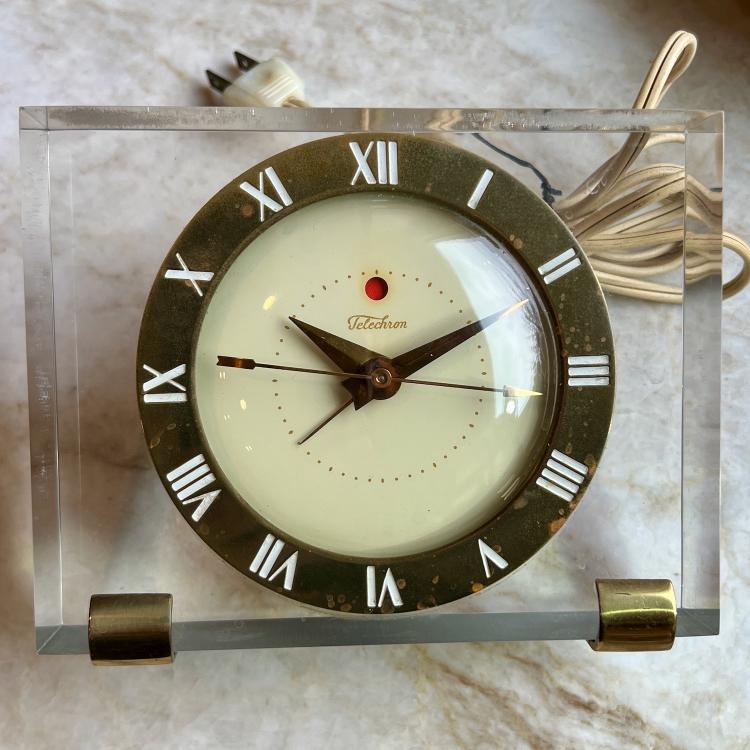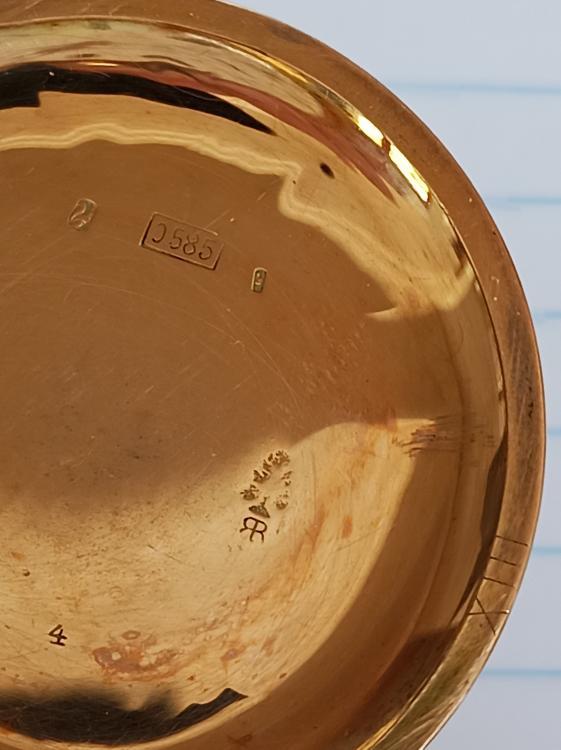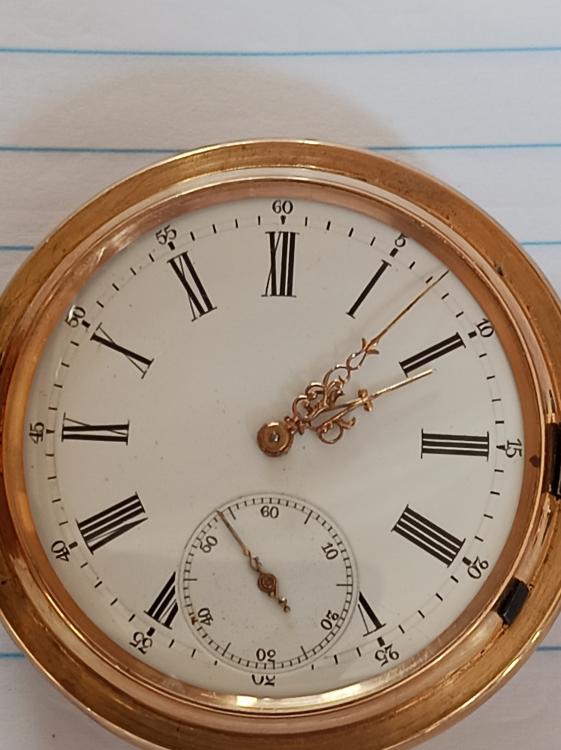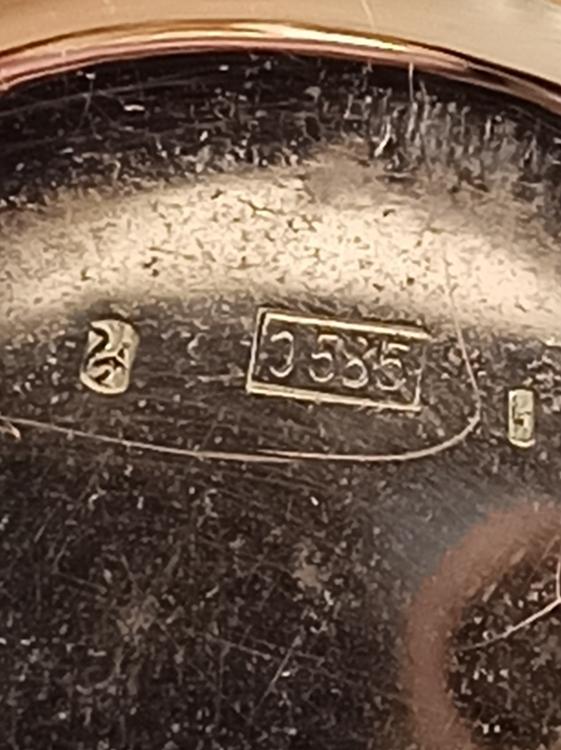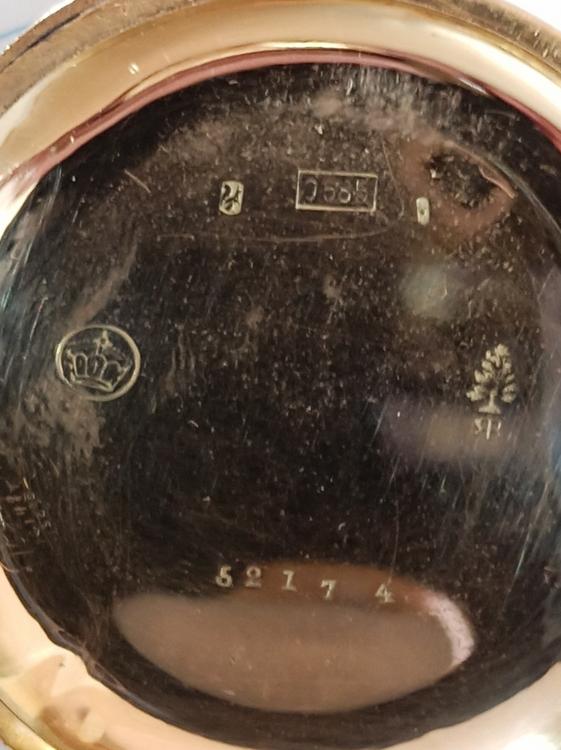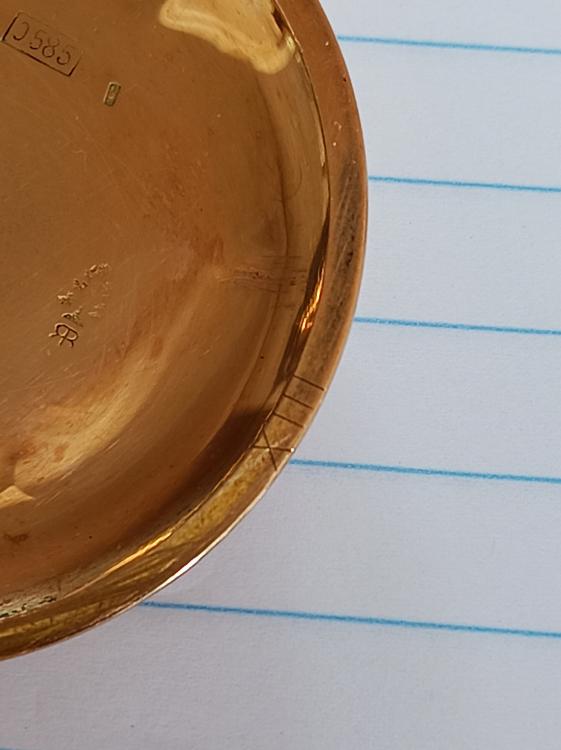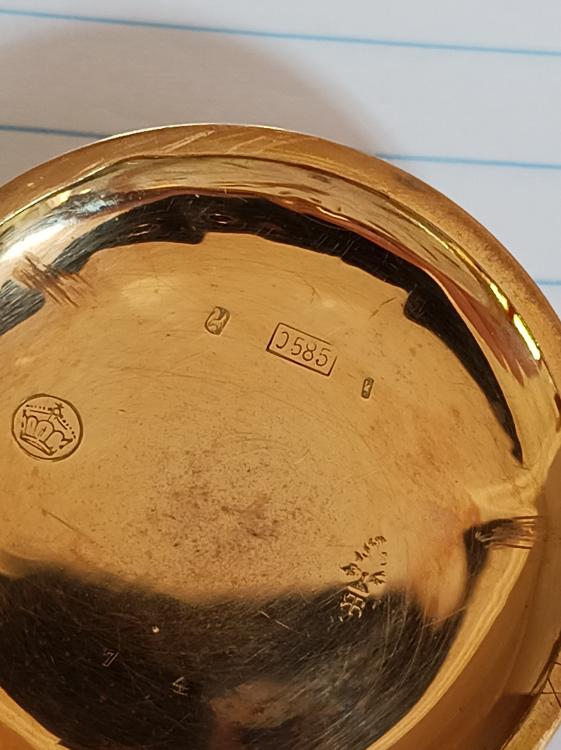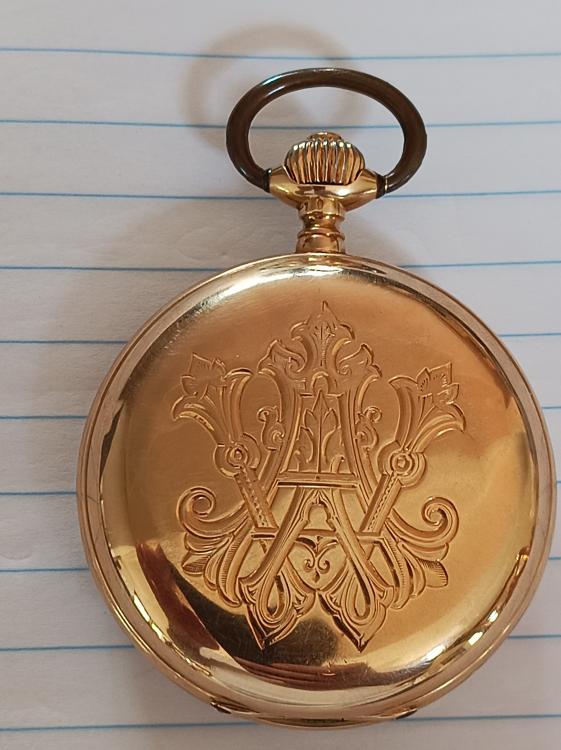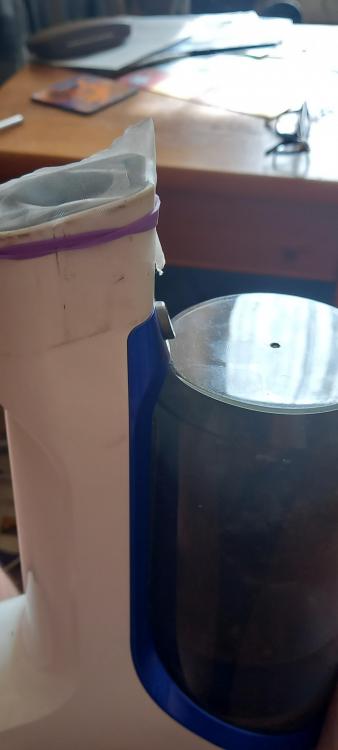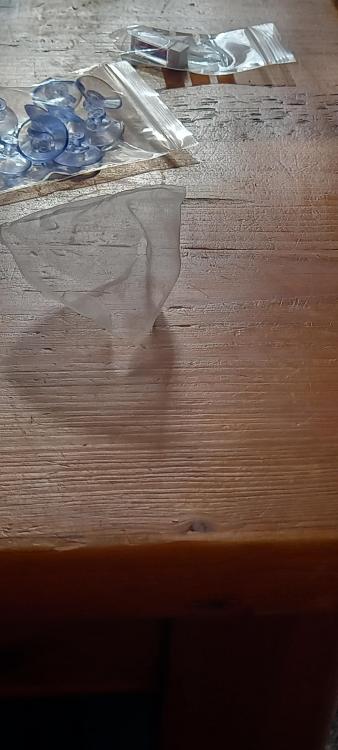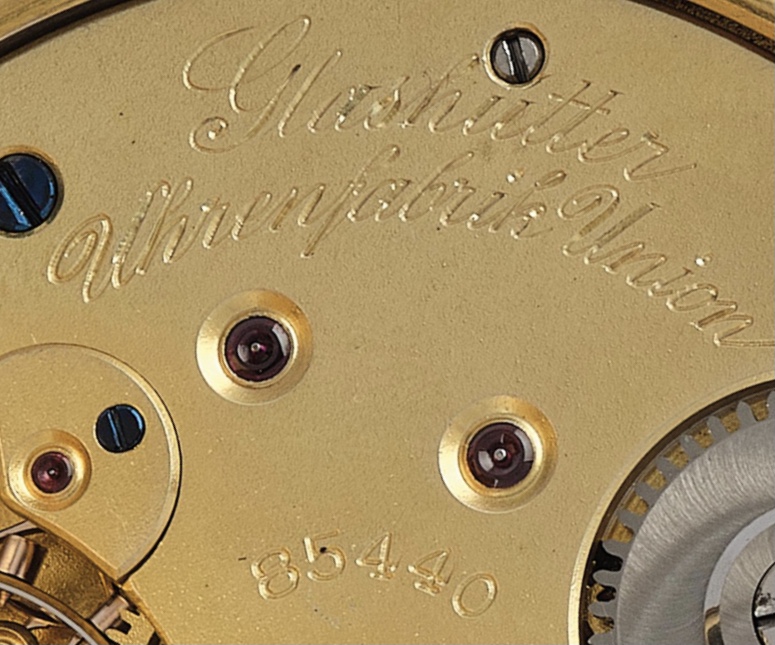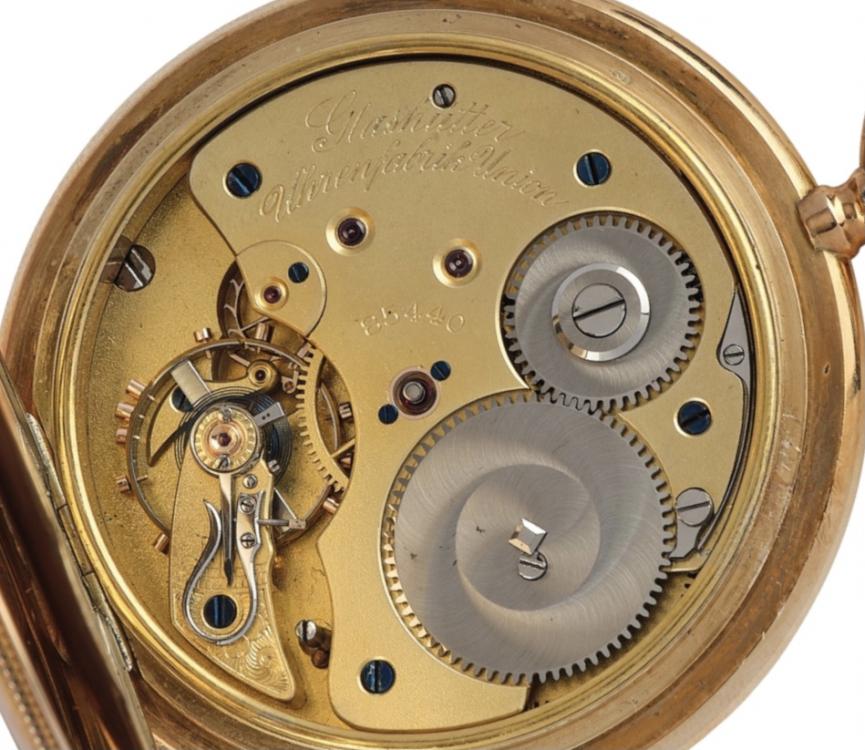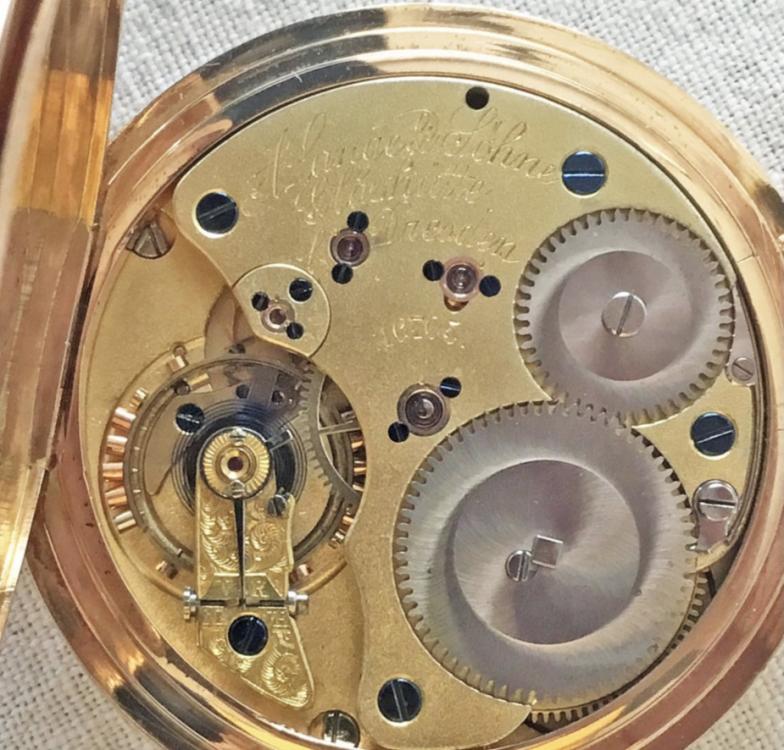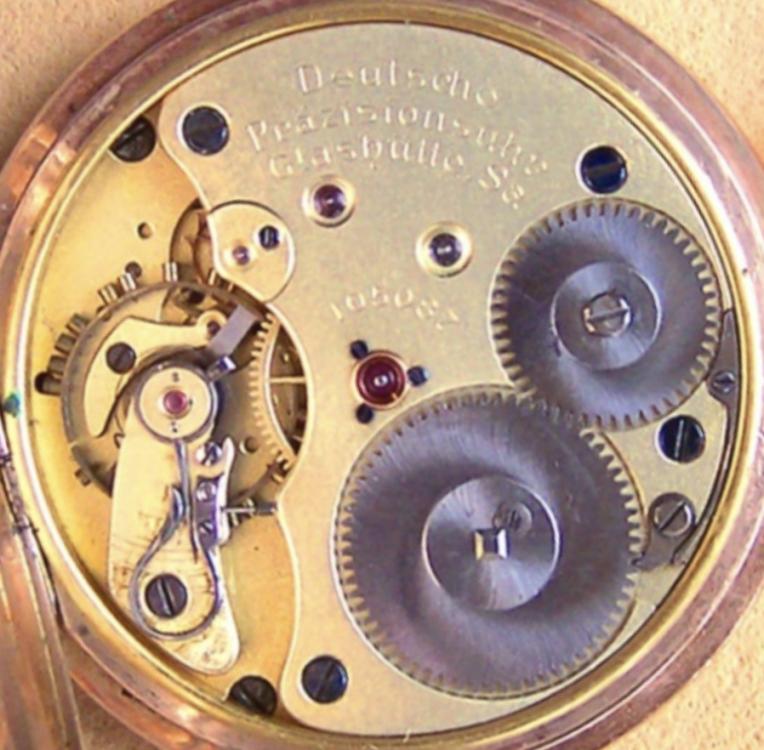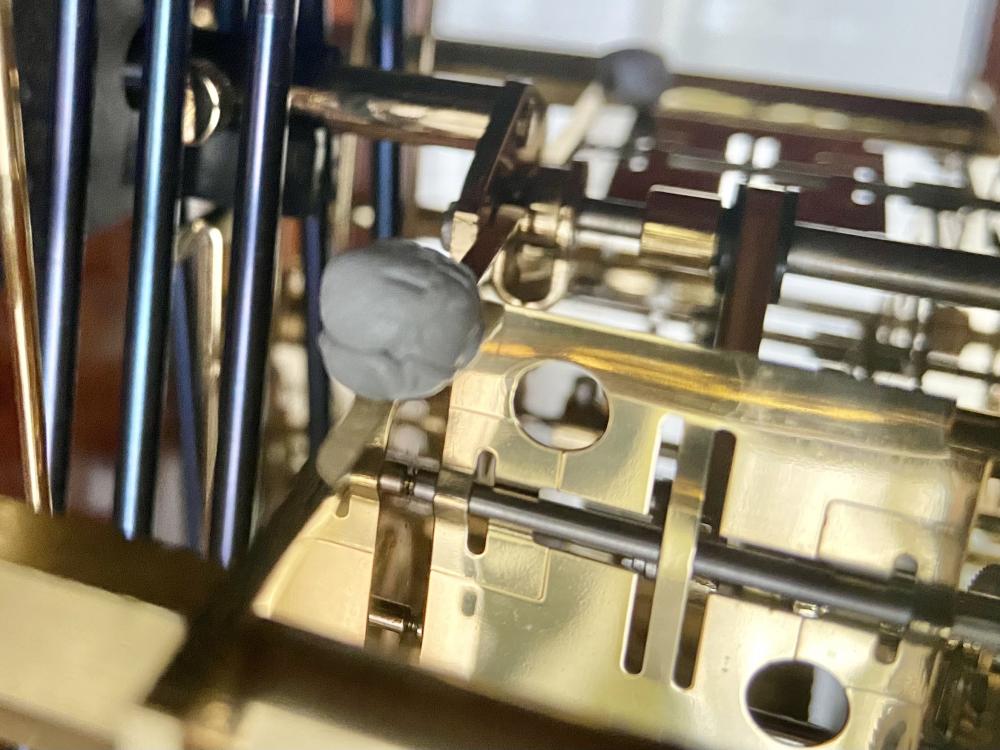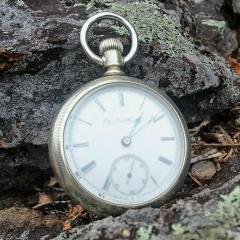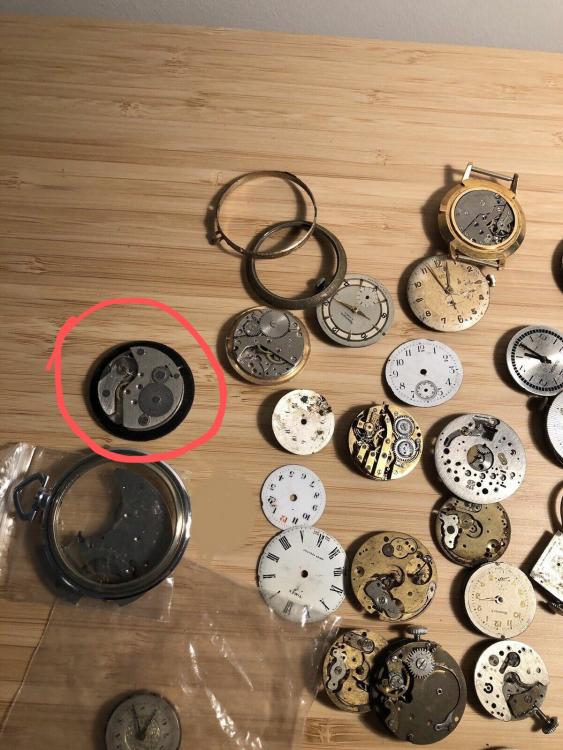Leaderboard
Popular Content
Showing content with the highest reputation on 09/03/22 in all areas
-
I have my first full service project, a 1974 Seiko with a purple/blue dial now only waiting for a replacement bezel. For what it's worth, in every picture I took of this watch it appears deep purple. When looking at it in person, there's much more blue in the dial. Regardless of what I did I could not get a picture to show it how it truly looks in person. It's repair was lengthy, and quite a challenge for being my first top to bottom watch repair (as previously documented on this website). The bezel is shipping from Denmark to central USA. It was shipped on August 17th, and the last bit of tracking info I received was the that it was in foreign international dispatch on August 18th. It's been 2 weeks, so hopefully it will be arriving sometime soon. While waiting for that bezel to arrive, I decided to start on my 2nd full service project. I found an interesting green dial Seiko Lord Matic from 1972 on eBay and picked it up for a pretty good price ($38 before shipping). It was listed as a non-runner. It had a bent tooth on the barrel and a broken tooth on the 3rd wheel. A donor 5606A movement provided me with the needed parts, and after a full service I 'lightly' polished out some of the minor scratches in the case. I did not want to get out the sanding sticks and really start to move/remove to much metal in an effort to remove some of the deeper scratches. The case still shows some honest wear, but it looks much better in my opinion. I also taped off the flats on the top and sides of the case and ran it over some 3M Scotch Brite pads. I found a great looking pattern by using the 'Very Fine' for a few passes, and finishing with the 'Ultra Fine' pads. This one is ready now as well, minus 1 part. The faceted crystal in this Seiko Lord Matic was beyond saving. I had a difficult time trying to find a NOS replacement, and I believe I've identified a potential replacement via an old Seiko part number, but could never find an available picture anywhere. Cousins showed to have one in stock at a very good price so I decided to gamble on it and placed the order. The crystal should be arriving next week, so we'll see what it looks like when it gets here. Hopefully it will work, because the one NOS faceted crystal I did finally locate is quite expensive, so I'm pinning my hopes on the Cousins part doing the job so I don't have to order the other one! With the 1974 Seiko (on the right), I probably have a few dollars more into the repair of the watch than it is worth, but I don't see that as an issue personally. It was my first watch and turned out to be a very educational experience, well worth the cost of repairs. The green 1972 Lord Matic I believe is worth more now than what I have invested in it. These watches seem to command a little bit of a premium over the regular Seiko's of that time (at least the working ones on eBay do). I really like the look of this watch, and while both are a bit small for me in my opinion, having a 20.5cm wrist, I'm going to order some straps and wear them proudly. Once these are finished, next up on the list is a Jerome Piquot watch I picked up on eBay for $19. I know nothing about the watch, other than it was very inexpensive and I thought the dial had character. It has an AS 1686 movement inside, and from first glance (without disassembly) one of the case screws has a broken head and it is missing the seconds hand. It is so filthy inside the amplitude is basically non-existent. All of that aside, I think the dial is really unique. At first I thought the indices aside from 12, 3, 6 and 9 were all missing, but in fact they are cut into the dial. Close inspection shows that the dial is polished in those hour marker recesses. I think that is a pretty unique way to showing the hour markers. The movement looks simple enough to disassemble and parts seems to be somewhat available on eBay so I think I'm going to give this old $20 Swiss watch some attention in the coming weeks.3 points
-
Eyup world, morning UK. Just thought i would play out some advice for beginners with the common issue of tight bridges and cocks. Prompting me to do this from a particularly stubborn example of this problem last night. This is a regular occurance on vintage swiss, in fact around 60 percent of the watches i come across have at least one bridge or cock that doesn't fall into place nicely. Oris is especially typical of this. I know tolerances need to be tight for correct gear meshing and exact side shake between all pivots but some can be a real shit to get back on. Wrestling with the tight placement of a bridge can often lead to bent or broken pivots especially for beginners that are still feeling their way around a movement. So last night's restoration gave me probably one of the worst I've had for ages, a tight train bridge with a bent escape wheel pivot luming. I really like the watch and didn't fancy trying to source a new part as thats another crossed off the list of ever decreasing availability of them. So i decided to take my time ( almost an hour in fact) and well worth it imo ( never rush repair especially when you are getting frustrated, particularly applicable to me as a have a short fuse at times. ) So before assembly do a quick dry run of the bridges. The barrel ( great wheel or first wheel ) bridge generally isn't a problem as you have a little more tolerance here and a large tough arbor thats not easily damaged ( unless you are built big and clumsy like the Hulk, in which case why are you repairing watches ? ). Its usually the train bridge and sometimes the balance cock that causes problems. The more difficult ones are where you cant see the locating studs next to the screw holes. Instead of a through stud hole on the bridge where you can see the stud on the mainplate there is a shallow blind hole or the stud is on the underside of the bridge fitting to a hole in the mainplate. So test your bridges dry ( no train wheels ) and if they are tight work them on and off for a while ( nearly an hour yesterday ) . And if still necessary the tiniest smear of grease before the final assembly of the train. With out that easing off a bent or broken pivot is very possible, usually the escape wheel ( i would lay money down that everyone has done it ) The balance cock is also susceptible to this, some have as many as 3 studs in an obviously very close proximity to each other so tolerances can be pretty tight here to keep things right. Removing cap jewels and chatons would be a good course of action if the cock is tight, to give the staff pivots a bit of wiggle room while you perform. A broken balance staff pivot is a real pain in arse, and for beginners often requires another assembly complete. Dont be tempted to broach out stud holes its very risky. Pros i would think can get away with smooth broaching, I've even done it myself on occasion, but personally not something that should be recommended to a beginner. The on and off method would be a much safer bet if the bridge is especially tight. So there you go, my little input for the day, I'm off to do a bit of plastering now, catch you all later. X3 points
-
For pocket watches, Pocketwatchdatabase.com. I also have a book, American Pocket Watches Identification and Price Guide by Roy Ehrhardt and William Meggers. The book is good for browsing movement drawings. For wrist watches, I have a couple of books by Bruce Shawkey. Waltham Wristwatches, A Collectors Guide and Elgin Wristwatches, A Collectors Guide, 2nd Edition. He has other titles, too. These books are oriented to identifying models via catalog extracts, advertisements, patents, etc. The model can be a starting point when figuring out what movement you are looking at. Lastly, the E & J Swigert Co. material house published the Illustrated Manual of American Watch Movements, the copy I have was reprinted by S. LaRose, Inc. (both defunct material houses) . This one is helpful, but only covers watches from the early 50's and before. Hope this helps!3 points
-
That's why many chiming clocks are fitted with a silent turn on or off. Striking clocks you just bend the hammer away from the bell or gong, but it is best to wind both sides up as some movements can and do jam up which will stop the clock. French clocks are a bugger for that.3 points
-
Final update. My patience finally paid off and I managed to find a perfectly sized replacement bezel on Ebay. It is not the same style as the original and red was the only option but I actually think it works really well (the red is metallic and looks better in real life). This watch is now my daily wearer!2 points
-
Haha. Thats fine. I've been in construction for nearly 40 years. I have lots and lots and lots and lots and lots and lots and lots and so on and so and so on of tools. I think you get the picture, its fine.2 points
-
Hi Below is a link to its history https://r.search.yahoo.com/_ylt=AwrIQhJ3mxNjoY8AyAJ3Bwx.;_ylu=Y29sbwMEcG9zAzIEdnRpZAMEc2VjA3Ny/RV=2/RE=1662258167/RO=10/RU=https%3a%2f%2fen.wikipedia.org%2fwiki%2fTelechron/RK=2/RS=icAnwmyYVq5P8yQ7rL2oaVyqPr4- and also this one https://r.search.yahoo.com/_ylt=AwrIQhJ3mxNjoY8A5AJ3Bwx.;_ylu=Y29sbwMEcG9zAzcEdnRpZAMEc2VjA3Ny/RV=2/RE=1662258167/RO=10/RU=https%3a%2f%2ftelechron.net%2fmain.htm/RK=2/RS=_9D.o8uSTKwhKU53La9Y4G54QAg-2 points
-
Fantastic Thor. I appreciate the link That has inspired me to have a go at making a strap one day. I used to work with a guy that started out his working life in a tannery. He learnt to make some really cool stuff.2 points
-
I picked up another 0.99p Eddie Stobart Trucks "Collectible" pocket watch the other day, with a view to seeing how this idea would look. I think it turned out quite nicely. The image is a "blue marble" image of earth taken by the NASA Earth Observatory in 2005. I think I'll maybe do a couple of others with images from the JWST, perhaps one of the recent infrared images of Saturn.2 points
-
Thats a shame. With a little more care the dial may have been perfect. I bought a lot of small boxes of named watch stems a few months ago. When they arrived most of the boxes had come open . I was left with thousands of stems to measure . Two days and a big refund later they were reboxed. It was good practice though You know theres a way to make comments without coming across like a nob right ?2 points
-
Eyup everyone, hows you all doin ? This is an update on a diy cleaning machine i made a while ago. Been using it a couple of months now and its ok and it cleans well, but i was bored this evening and decided to make up something cheaper still and that could be a useful little gadget when you want a quick hassle free clean and maybe something beginners on a budget could try. Its a little adaptation to # Its about f--king time's # little invention he made at the same time i made the big one. I was going to go the same route but then decided to go big. And our Gerty ( soz matey lol, love you loads of course you know that ) directed and inspired me to have another little play. Here are some photos, and a bit of info as to what i used. The first is a pillar drill, this only spins one way and rotates the basket along with the fluid so not loads of agitation created, but the insert for the tray does stir things up quite well. And then this evenings, made up of some kitchen and shed bits. 1 glass jar with rubber sealed locking lid to prevent evaporation when not in use. 1 agitation mixer insert from a protein shaker. 1. Plastic lid from a tuperwear tub to prevent any splashing. 1 mastic tube nozzel . And 1 . 6x150mm bolt with washers and nut. Total cost about 4 quid. Pros over the pillar drill, small and neat so good space saver, rotates both directions when used with a cordless drill and the basket spins independently of the fluid so much more agition created. Cons you do have to stay with it and operate it manually unless you wanted to rig up a frame to hold the cordless drill. Obviously other cost incured is the cordless drill, but everyone has a cordless drill right ? Even my kids have one, i had 47 of them at the last count. . My recommendation would be to let the watch parts soak for ten mins first to loosen up the tenacious mank then give them a good swish around backwards and forwards for a few mins. Repeat if necessary. Enjoy playing and inventing. I'd love to hear about any other ideas .1 point
-
I bought this Mido wrench to address one watch in the LWS. Got it from Ofrei for a very good price. But, I want to use it on other watches--particularly ones that are front-loaders and/or armored crystals. So, I decided to 3D print some inserts with different dimensions to address this. I tested it on a Stellaris watch I had that is an armored front-loader. It worked! I show the wrench, a metal insert that came with the wrench, and the black inserts I printed.1 point
-
Couldn't get continuity on the original balance, and oddly enough when I compared it to the working one I could not even see the weld on it. Maybe it failed and fell away long ago. No matter though, I have the serviced movement ticking and I can't wait to finish casing it. Thanks for the advice all, and apologies to the OP for hijacking this thread.1 point
-
then all the reference mentioned to work fine. If you're looking at Elgin in particular and you want to identify a movement for collectibility or figure out what it is then things like the pocket watch database has literally thousands of mistakes. But it will work just fine for parts. That means conceivably you can have a rare watch and not realize it because the pocket watch database is wrong but don't worry all the rest the reference books mentions will have the exact same problem.1 point
-
Hey everyone, I thought I'd share this insanely good and interactive visualization about how mechanical watches work -> https://ciechanow.ski/mechanical-watch/ I've always admired Bartosz ability to break down and visualize complex system, so I was really happy to see him do one on mechanical watches. It is even more impressive when you look at the code that does the data visualization as he codes everything by hand and without the help of libraries which is extremely hard to do.If you are in the browsing mood on this lovely Saturday morning though, I definitely recommend some of his other posts -> https://ciechanow.ski/archives/1 point
-
I used to routinely include that link in replies to new introductions. It is an amazing piece of work!1 point
-
I'm not familiar with Flume but I own a hardcopy of Best Fit and that and Ranfft serve my needs. I would imagine that the need to identify odd ball movements is more of a hobbyist thing as (I suspect) the pros doing actual servicing (as their job) routinely see the same pieces. But I too would be curious if other resources exist that are more commonly used. - Gary1 point
-
Haha been there done that, my big mouth got me into a lot of trouble when i was younger but i loved every minute of it lol. I'm pleased you had a good evening matey.1 point
-
A wide variety of Telechron styles were made, including wall clocks, alarm clocks, timers that could be used to turn on and off household electrical items and others. Your wall clock with a GMT hand is something I haven't seen. I have one of their wooden-cased timer clocks (older) and also the one pictured below, a more modern alarm clock which is mounted in polycarbonate with brass trim (I need to clean and polish this little guy some day). The red dot on the dial of mine is an indicator that the power has been interrupted. It is held up by an electromagnet but drops down if the power goes out, until you reset it. An early version of today's flashing clock displays meant to let you know that the time displayed might be wrong. The claim to fame was that the company came out with some of the first electric clocks that didn't have pendulum, balance or other internal oscillator but relied on the 60 Hz signal from the AC transmission line to drive the motor at a constant and appropriate rate. So your clock was as accurate as the local power plant distribution maintained their frequency. In order to help out on that end in the early days, the company also set up a chronometer-type master clock system in the power plants that could help the utility tweak their output to be correct.1 point
-
Haha. We have more in common matey. I've been interested in astronomy on and off since i was nine years old. The Hubble images used to blow me away. They sent that billion dollar scope up there initially like a typical old Timex watch. Non working lol i still have my old 4 foot reflector i got for my 12 birthday.1 point
-
Well, if you'd like to read more about the Telechron electric clock, you could try here- https://www.telechron.net/main.htm NAWCC also has some electric clock afficianado's, I'm sure you'd find someone there who knows all about them Cheers!1 point
-
1 point
-
1 point
-
Lol maybe. I drink a lot of green tea and fruit infused tea. In the Uk we have brand called tea pigs . These use a really fine mesh bag. I was trying to think of a use for them six months ago and came up with the same vacuum idea while sucking up parts with a small cordless hoover. Oh and the packet of small suction cups on the table are another whacky idea to try to do with watch repair. Any guesses ?1 point
-
Gold hallmarks: Swiss (squirel) and German (crown). The tree hallmark indicates the watch/case manufacturer most likely. The pics show three movements (all from A. Lange in Glashütte) with higher grade but same base. It is most likely the caliber 43 made in Glashütte Germany by the „Deutsche Präzisions-Uhrenfabrik Glashütte“ (a brand of A. Lange) https://sb471a5d80e51f904.jimcontent.com/download/version/1496563829/module/6403465551/name/DPUG Kaliber final.pdf https://www.glashuetteuhren.de/kaliberuebersichten-modelle/a-lange-soehne/kaliber-41/1 point
-
https://www.watchrepairtalk.com/topic/22385-interactive-3d-watch/#comment-1890311 point
-
What is a fine tea bag filter? Remember, I am on the other side of the Atlantic. Can I use a Mr. Coffee filter1 point
-
To be honest, I am still totally green at this and I had no real issues getting my first couple of Timexes back together after fully disassembling them. Now I've really got the hang of it. The Electric I'm working on now is the first troublesome one (way harder than the conventional windup ones). For a hobbyist with time to waste, they're fine and not as bad as everyone says. I can see how for a professional though, the extra 10 minutes of fussy work would be disruptive. One thing that is great about them for novices: parts are abundant. If something goes wrong, you can usually find a suitable replacement ending uncontested at auction within the hour. Good luck!1 point
-
Yes, from what I can see, the Kieninger mechanism does look nice. I've heard of those. And I will certainly be winding all barrels. I like the sound of mechanical striking clocks. I grew up with them. My parents and grandparents all had them. And they kept them wound and in good order. I was always surrounded by that sound. When I first moved out on my own, I didn't have a clock with me, and on my days off from work it was so quiet at the apartment that I almost went mad. After that I got a clock.1 point
-
1 point
-
bit of creative thinking and application and here we have a way of cleaning watch parts effectivly. What is a watch cleaning machine ? a mechanical device which swishes parts in a cleaning solution. add a timer, the ability to reverse the motor and speed control, and a heater for drying the parts. An expensive tool for the hobbyist. I bought a non worker for £10 at a car boot, lucky find. Its now repaired and working but people are not always that lucky so a bit of invention and application, I an sure there are many DIY devices/machines out there so lets see some on here for others to share and build. well thought out NEW.1 point
-
Brass bushing wire is used more in clock repairs than watch repair. A lathe is necessary the turn the outer diameter of the bushing wire to the diameter that you want and the drill is placed in the tailstock of the lathe to drill the hole. Then the wire cutoff to match the thickness of the plate. I recently rebushed the centre hole of a vintage watch with a ready made bushing from Bergeon. A end cutting drill is needed to cut off the excess bush and get the correct amount of endshake with the cannon pinion fitted on. A staking set is also needed to press in the bushing and expand it in the hole. The entire process is quite involved and requires specialized tooling.1 point
-
I’d love to give a comprehensive reply bit I’m a little hung over. But I might just play with something like this for sheets and giggles1 point
-
Thank you again. The vacuum worked..... Too well. I can stock my spare parts bench. I also did find that lost wheel from the Croton. I was surprised how much stuff I found from old projects that I needed to purchase a donor movement to complete.1 point
-
Great work Gert. Gerty the Great lol. The Custom Kid . Seiko Sensai. Shall i keep going or will your head explode ? Haha.1 point
-
Still not sure what it is but if it means something to you, it looks as if the eBay link below has one of them for sale in this lot. A bit pricey if you only wanted the one movement. https://www.ebay.com/itm/144567294554?hash=item21a8e1da5a:g:lBMAAOSwz0pii3L1&amdata=enc%3AAQAHAAAA4I2nNW3p4lVSn7mA7YQLmdfzzRT1Huq%2BqOiibNM6hNua073a6LqRe32NAv5z7eoEoUoJIE%2B9DHP98iEzXAeTwxpAckhPxI6Fl0tFyJ5Ncx6j%2FzHl1V79u3lmclztAtEa%2FZI26Vw6CiaCTRMDRz7Kc5bFD4z3TQzjjgcFryVB0Fi2HBOYYEkG%2BuypJ21VdW0wRtyF3jtR2rmD9VaRbgd7zO3ue4igY9iaDKYn6jsQ5pnrZ5%2B2zENYHd%2Fo1c%2FgCW%2BPLxlecYsraUu%2FR%2FEh3LBLKdyXNeCkavZPzD9fFdpR8jh7|tkp%3ABk9SR6qh5qHbYA1 point
-
Haha down yourself a nice strong filtered coffee matey, your concentration will soon pick itself up lol. The movement is very similar stuart if not the same. I thought i spotted some identification under the train bridge. Just out of curiosity for myself can you post a photo with the brige removed. You know when something is bugging you1 point
-
No chance of the spring pinging off on you, I also did a vid how to re-fit the spring There are more than one way to skin a cat...1 point
-
I revisited this as the crown action wasn't right (too stiff to select the time setting position). Basically the lever was pushing too hard against the balance rim. I suspect that in time some damage could easily be caused to the balance pivots. I shortened the lever as shown filing away the wider bit at the end and then rounding it smooth (like a lolly stick). Lever is shown in the crown pushed in position. So much better now and the crown action is back to how it was. I can only conclude that ETA 2789 balance diameter is a bit larger than that of the ETA 2824-2. I don't have one to check but it sounds feasible due to the higher beat rate of ETA 2824-2. Steve.1 point
-
I think what happens is people buy chiming clocks as they sound nice, then as time goes on the quarter chime gets annoying and eventually they get fed up of it and they are confined to attics/cellars or a little used room. I did a charles Frodsham three train clock for a friend which had not been going for some time and exactly that happened. In modern times there are so many ways to tell the time, Mobiles, smart watches, talking clocks/watches the humble clock gets side lined shame nut true.0 points





